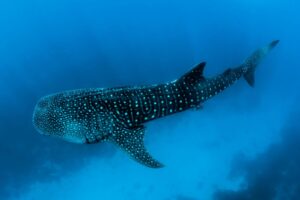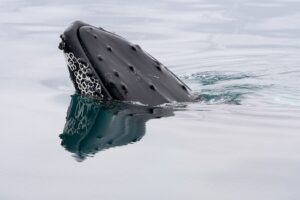Wildlife, both fauna and flora, is the most important element in maintaining the delicate balance of many ecosystems, and it contributes significantly to the overall health of our planet.
Losing one species may have a cascading effect on other species and the entire ecosystem.
This article will explore all the endangered and critically endangered animals according to IUCN, organised according to species and taxonomy (with a surprise). You can find a brief explanation of where they live, their population number, why they are endangered, and some ideas on responsible travelling opportunities to see and help their conservation.
Current State of Endangered Animals
Numerous species face the threat of extinction due to various factors such as habitat loss, poaching, and the detrimental impacts of climate change.
Some of these endangered species are classified as critically endangered, indicating a high risk of extinction in the wild. This classification often corresponds with a significant population decline, with the numbers of these species reaching alarmingly low levels.
Habitat loss, primarily driven by human activities like deforestation, urbanisation, and agriculture, remains a leading cause of endangerment for many species.
As natural habitats shrink, populations need help finding suitable food, shelter, and breeding areas.
Conservation can help establish protected areas, restore habitats, and implement strategies to mitigate the impacts of habitat loss. However, despite ongoing conservation initiatives, the population’s decline in endangered species persists.
Threats to Wildlife Conservation
Wildlife faces significant challenges from threats such as habitat loss, poaching, climate change, pollution, and habitat fragmentation. Endangered species are particularly vulnerable to these threats.
- Habitat loss, driven by deforestation and urban development, disrupts ecosystems and diminishes available living spaces for wildlife.
- Poaching, fueled by illegal wildlife trade, puts immense pressure on endangered species, pushing them closer to extinction.
- Climate change further exacerbates the situation by altering habitats and making it difficult for wildlife to adapt.
- Pollution from various sources, including plastic waste and chemical runoff, harms endangered animals’ health and ability to reproduce and thrive.
- Additionally, habitat fragmentation caused by infrastructure development isolates wildlife populations, limiting their movement and genetic diversity.
Giant Panda
According to IUCN, the Giant Panda is technically not considered endangered but vulnerable, which means it is not on this list. Although “vulnerable,” Giant Pandas have a poor reproductive rate, which can jeopardise their existence.
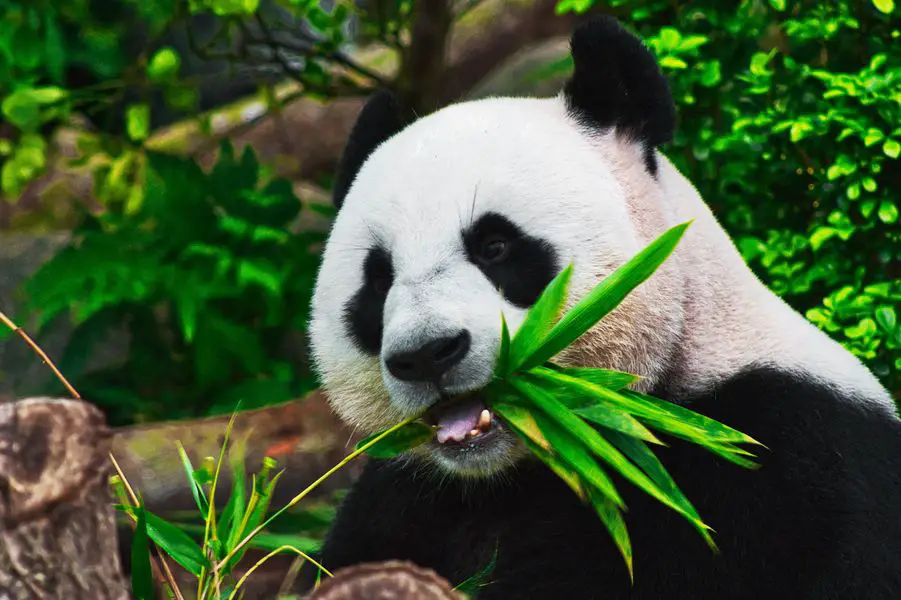
Endangered and Critically Endangered Animals
Land Animals
Elephants
Elephants face severe endangerment due to a combination of factors. Habitat loss, poaching for ivory, and human-elephant conflict pose significant threats to their survival. However, several conservation programs and initiatives have been established. National parks and wildlife sanctuaries, such as Odzala-Kokoua in the Republic of Congo, Way Kambas National Park in Sumatra, Serengeti National Park in Tanzania, and Periyar National Park in India, provide safe havens and contribute to elephant conservation efforts.
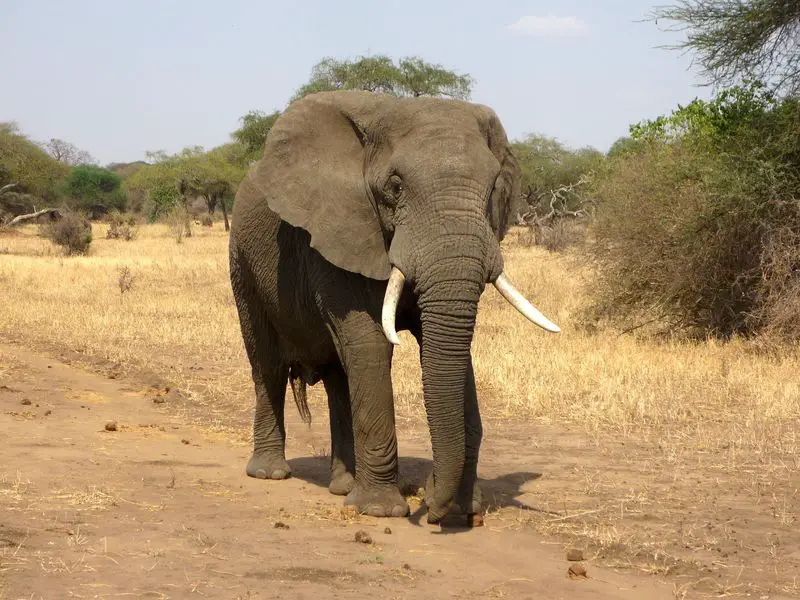
African Forest Elephant (Loxodonta cyclotis)
Family Elephantidae, Order Proboscidea.
- Why endangered: Habitat loss and fragmentation, and poaching for ivory.
- Location: Rainforests of Central and West Africa.
- Population: Estimated around 100,000.
- Responsible traveling: National parks like Odzala-Kokoua in the Republic of Congo.
Sumatran Elephant (Elephas maximus sumatranus)
Family Elephantidae, Order Proboscidea.
- Why endangered: Habitat loss, human-elephant conflict, and poaching.
- Location: Island of Sumatra in Indonesia.
- Population: Around 2,400 individuals.
- Responsible traveling: Way Kambas National Park in Sumatra
African Savanna Elephant (Loxodonta africana africana)
Family Elephantidae, Order Proboscidea.
- Why endangered: Poaching for ivory, habitat loss, and human-elephant conflict.
- Location: Savannas of Africa.
- Population: Approximately 415,000 individuals.
- Responsible traveling: National parks such as Serengeti National Park in Tanzania or Amboseli National Park in Kenya support elephant conservation efforts.
Asian Elephant (Elephas maximus indicus)
Family Elephantidae, Order Proboscidea.
- Why endangered: Habitat loss, human-elephant conflict, and poaching.
- Location: South and Southeast Asia.
- Population: Approximately 40,000-50,000 individuals.
- Responsible traveling: Visit national parks like Periyar National Park in India or Udawalawe National Park in Sri Lanka.
Bornean Elephant (Elephas maximus borneensis)
Family Elephantidae, Order Proboscidea.
- Why endangered: Habitat loss, human-elephant conflict, and poaching.
- Location: Island of Borneo in Southeast Asia.
- Population: Approximately 1,500 individuals.
- Responsible traveling: Visit national parks like the Kinabatangan Wildlife Sanctuary in Sabah, Malaysia.
Indian Elephant (Elephas maximus indicus)
Family Elephantidae, Order Proboscidea.
- Why endangered: Habitat loss, human-elephant conflict, and poaching.
- Where they live: South and Southeast Asia.
- Population: Approximately 20,000-25,000 individuals.
- Responsible traveling: Bandipur National Park in India or Minneriya National Park in Sri Lanka.
Sri Lankan Elephant (Elephas maximus maximus)
Family Elephantidae, Order Proboscidea.
- Why endangered: Habitat loss, human-elephant conflict, and poaching.
- Location: Sri Lanka.
- Population: Approximately 2,500-4,000 individuals.
- Responsible traveling: Udawalawe National Park or Yala National Park in Sri Lanka.
Rhinoceros
The primary causes of their endangerment are relentless poaching for their valuable horns and habitat loss. In Eastern and Southern Africa, the Black Rhino population hovers around a mere 5,000 individuals, making urgent conservation efforts crucial.
Another critically endangered species, the Javan Rhino, faces the imminent threat of extinction, with only approximately 74 individuals remaining.
The Sumatran Rhino, found in Sumatra and Borneo, also teeters on the brink of extinction, with fewer than 80 individuals left.
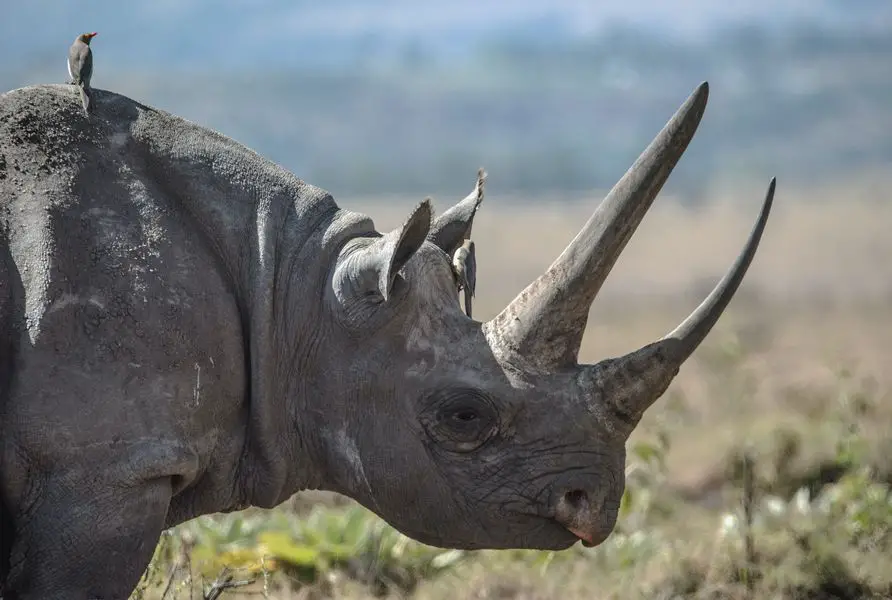
Black Rhino (Diceros bicornis)
Family Rhinocerotidae, Order Perissodactyla.
- Why endangered: Poaching for their horns and habitat loss.
- Location: Eastern and Southern Africa.
- Population: Around 5,000 individuals.
- Responsible traveling: Hluhluwe-iMfolozi Park in South Africa or Lewa Wildlife Conservancy in Kenya, where tourism revenue supports conservation.
Javan Rhino (Rhinoceros sondaicus)
Family Rhinocerotidae, Order Perissodactyla.
- Why endangered: Poaching and habitat loss.
- Location: Ujung Kulon National Park in Java, Indonesia.
- Population: Only around 74 individuals are left
- Responsible traveling: Visiting the national park is restricted, but you can support rhino conservation through organizations like the International Rhino Foundation.
Sumatran Rhino (Dicerorhinus sumatrensis)
Family Rhinocerotidae, Order Perissodactyla.
- Why endangered: Poaching for their horns, and habitat loss.
- Location: Sumatra and Borneo.
- Population: Fewer than 80 individuals.
- Responsible traveling: Support organizations like the International Rhino Foundation or the Sumatran Rhino Sanctuary in Way Kambas National Park, Indonesia.
Tigers
Tragically, tigers in the world face a grave threat of extinction. The primary reasons behind their endangerment include habitat loss, poaching, and human-wildlife conflict.
Across their range, various conservation programs and initiatives have been established to safeguard the future of tigers. These efforts aim to protect their habitats, combat poaching, and promote peaceful coexistence between humans and tigers. For instance, in countries like India, Nepal, and Bhutan, national parks such as Jim Corbett National Park, Chitwan National Park, and Royal Manas National Park provide protected spaces for tigers to thrive. Conservation organizations like the World Wildlife Fund (WWF) and Panthera work tirelessly to support tiger conservation, employing strategies such as community engagement, anti-poaching measures, and habitat restoration.
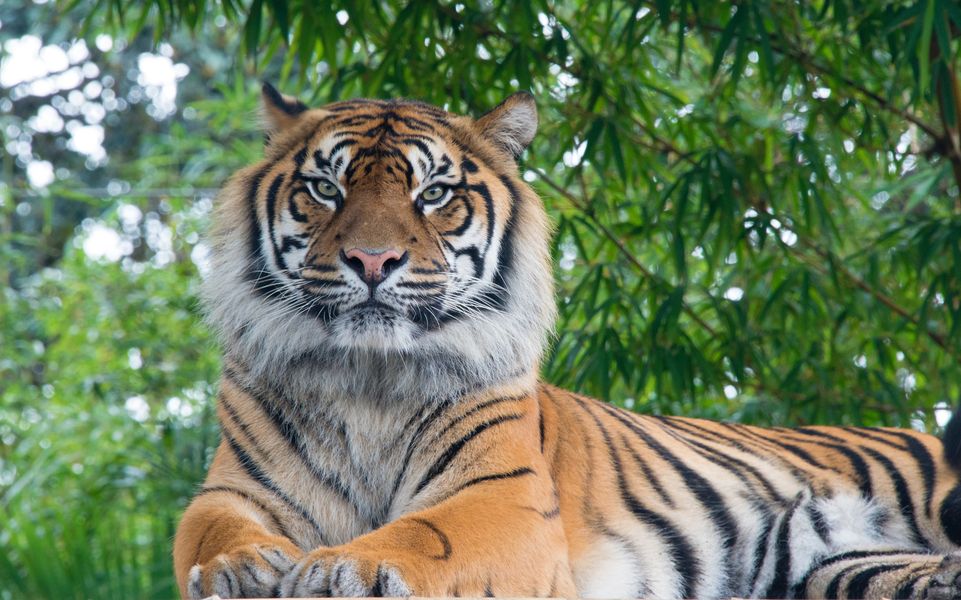
Sunda Tiger (Panthera tigris sondaica)
Family Felidae, Order Carnivora.
- Why endangered: Poaching, habitat loss, and human-tiger conflict.
- Location: Island of Sumatra in Indonesia.
- Population: Approximately 400 individuals.
- Responsible traveling: Visit national parks like Gunung Leuser, Kerinci Seblat, and Bukit Barisan Selatan, which support tiger conservation.
Tiger (Panthera tigris)
Family Felidae, Order Carnivora.
- Why endangered: Poaching, habitat loss, and human-wildlife conflict.
- Location: Asia.
- Population: Approximately 3,900 individuals.
- Responsible traveling: Visit national parks like Ranthambore National Park in India or Chitwan National Park in Nepal, both of which work to protect tigers and their habitats.
Amur Leopard (Panthera pardus orientalis)
Family Felidae, Order Carnivora.
Amur Leopard is a rare and endangered feline species inhabiting Far East Asia’s remote forests. With their striking beauty and elusive nature, Amur leopards face numerous challenges that have pushed them to extinction.
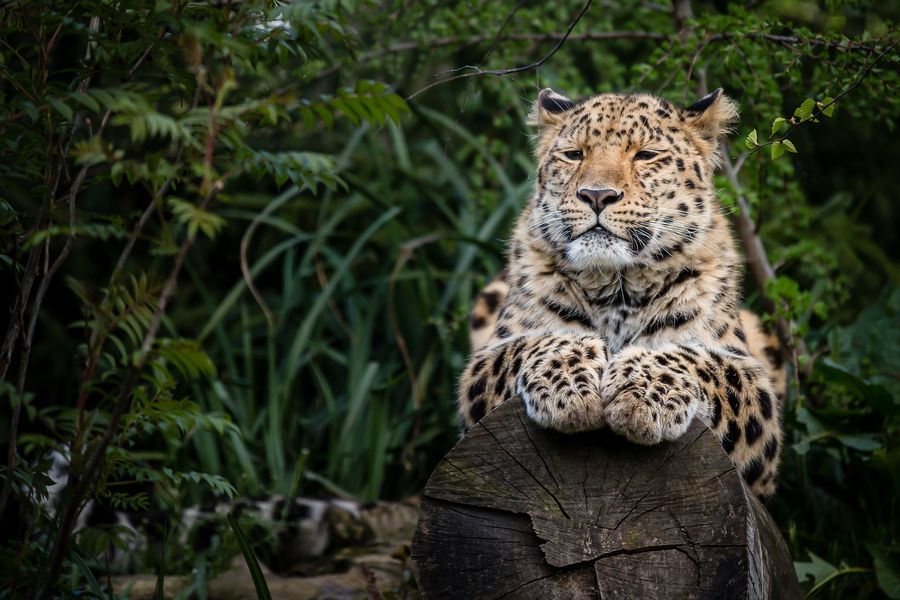
- Why endangered: Poaching, habitat loss, and climate change.
- Location: Russian Far East and Northeast China.
- Population: Approximately 100 individuals.
- Responsible traveling: Visit the Land of the Leopard National Park in Russia, which has dedicated eco-tourism programs to support conservation efforts.
African Wild Dog (Lycaon pictus)
Family Canidae, Order Carnivora.
African wild dog, also known as the African painted dog or Cape hunting dog. These highly social and charismatic creatures roam the vast landscapes of Africa, captivating observers with their distinctive coats and intricate pack dynamics. Unfortunately, African wild dogs face significant challenges that have led to their endangered status. Habitat loss and disease outbreaks have taken a toll on their populations.
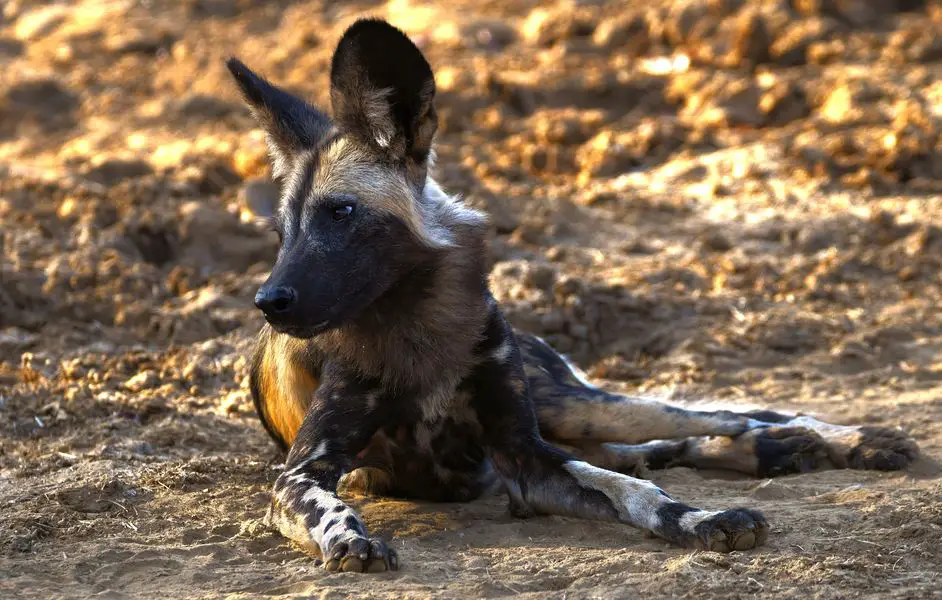
- Why endangered: Habitat loss, human-wildlife conflict, and disease.
- Location: Sub-Saharan Africa.
- Population: Around 6,600 individuals.
- Responsible traveling: National parks like Hwange National Park in Zimbabwe or Kruger National Park in South Africa.
Black-footed Ferret (Mustela nigripes)
Family Mustelidae, Order Carnivora.
Black-footed Ferret is a rare and endangered species native to North America. Known for their adorable appearance and playful nature, Black-footed Ferrets are among the most endangered mammals on the continent. The decline in their primary prey species and diseases has pushed these charismatic creatures to extinction.
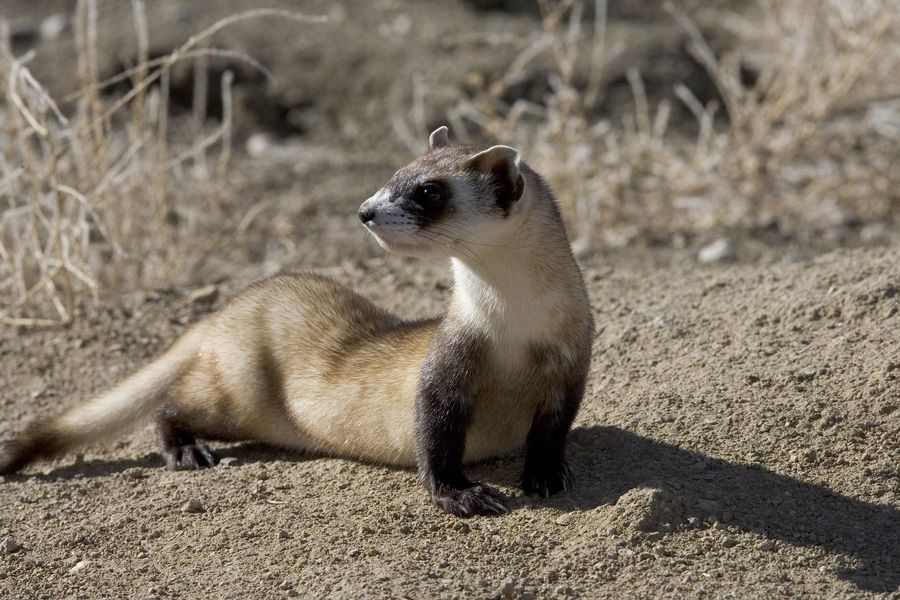
- Why endangered: Habitat loss, disease, and prey decline.
- Location: North America.
- Population: Around 370 individuals in the wild.
- Responsible traveling: Support conservation organizations like the Black-Footed Ferret Recovery Program.
Red Panda (Ailurus fulgens)
Family Ailuridae, Order Carnivora.
A charismatic and elusive creature that dwells in the mountainous forests of Asia, the Red Panda has captured the hearts of nature enthusiasts worldwide with its striking russet fur and beautiful masked face. However, this adorable species faces numerous threats that have led to its vulnerable status. Habitat loss, fragmentation, poaching, and climate change have all contributed to the decline of Red Panda populations.
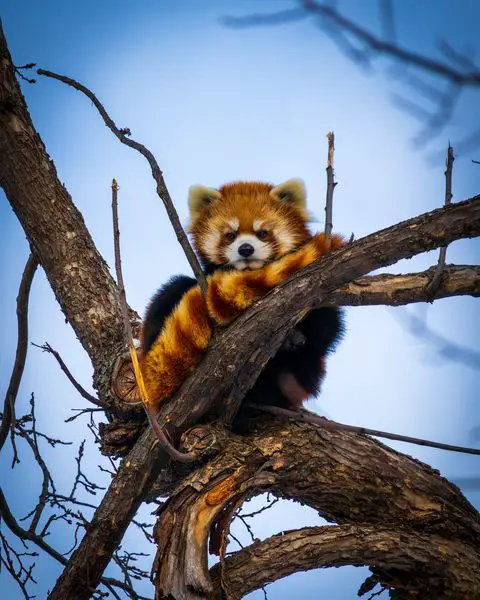
- Why endangered: Habitat loss, poaching, and disease.
- Location: Eastern Himalayas in Nepal, India, Bhutan, and China.
- Population: Estimated between 10,000 and 20,000 individuals.
- Responsible traveling: Visit national parks like Langtang National Park in Nepal or Singalila National Park in India, both of which work to protect red pandas and their habitats.
Primates
From agile monkeys swinging through the trees to wise and gentle apes, primates inhabit various habitats across the globe. They have complex social structures, extraordinary cognitive abilities, and diverse behaviors. Many primate species today face severe threats due to habitat destruction, illegal wildlife trade, and human encroachment. Conservation efforts are crucial to protect these incredible creatures and their habitats.
1) Orangutan
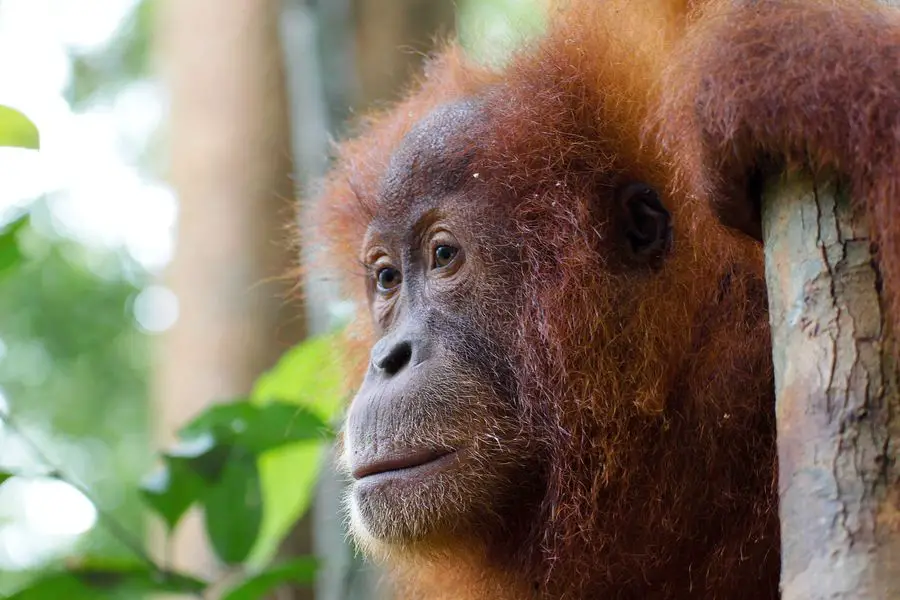
a. Bornean Orangutan (Pongo pygmaeus)
Family Hominidae, Order Primates.
- Why endangered: Habitat loss due to deforestation for palm oil plantations, illegal pet trade, and hunting.
- Location: Island of Borneo in Southeast Asia.
- Population: Around 100,000 individuals.
- Responsible traveling: Visit Sepilok Orangutan Rehabilitation Centre in Sabah, Malaysia, or Samboja Lestari in East Kalimantan, Indonesia, which rescue and rehabilitate orangutans.
b. Orangutan (Pongo abelii, Pongo pygmaeus)
Family Hominidae, Order Primates.
- Why endangered: Habitat loss due to deforestation, illegal pet trade, and hunting.
- Location: Islands of Borneo and Sumatra in Southeast Asia.
- Population: Approximately 100,000 Bornean and 14,000 Sumatran orangutans.
- Responsible traveling: Visit the Borneo Orangutan Survival Foundation’s Samboja Lestari in Indonesia or the Sepilok Orangutan Rehabilitation Centre in Sabah, Malaysia.
c. Sumatran Orangutan (Pongo abelii)
Family Hominidae, Order Primates.
- Why endangered: Habitat loss due to deforestation, illegal pet trade, and hunting.
- Location: Island of Sumatra in Indonesia.
- Population: Approximately 14,000 individuals.
- Responsible traveling: Visit the Sumatran Orangutan Conservation Programme’s North Sumatra, Indonesia rehabilitation center.
2) Gorillas
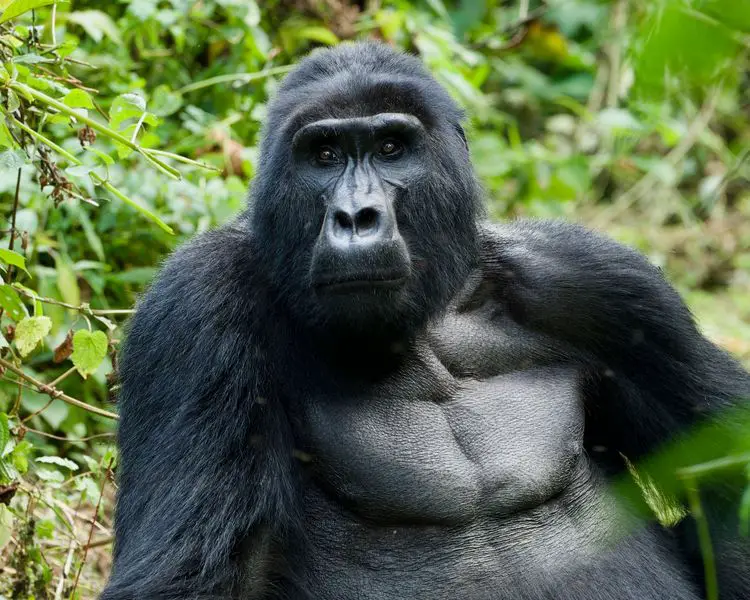
a. Cross River Gorilla (Gorilla gorilla diehli)
Family Hominidae, Order Primates.
- Why endangered: Habitat loss, hunting, and disease.
- Location: Nigeria-Cameroon border region.
- Population: Approximately 250-300 individuals.
- Responsible traveling: Visit the Kagwene Gorilla Sanctuary in Cameroon or Nigeria’s Afi Mountain Wildlife Sanctuary.
b. Eastern Lowland Gorilla (Gorilla beringei graueri)
Family Hominidae, Order Primates.
- Why endangered: Poaching, habitat loss, and civil unrest.
- Location: Eastern Democratic Republic of the Congo.
- Population: Around 3,800 individuals.
- Responsible traveling: Kahuzi-Biega National Park in the DRC is dedicated to protecting gorillas and their habitats.
c. Western Lowland Gorilla (Gorilla gorilla gorilla)
Family Hominidae, Order Primates.
- Why endangered: Poaching, habitat loss, and disease.
- Location: Central Africa Republic, Cameroon, Congo, Equatorial Guinea, Gabon, and Angola.
- Population: Estimated at around 100,000 individuals.
- Responsible traveling: Loango National Park in Gabon or the Dzanga-Sangha Special Reserve in the Central African Republic.
d. Mountain Gorilla (Gorilla beringei beringei)
Family Hominidae, Order Primates.
- Why endangered: Poaching, habitat loss, and disease.
- Where they live: Virunga Mountains in Central Africa (Rwanda, Uganda, and the Democratic Republic of Congo).
- Population: Over 1,000 individuals.
- Responsible traveling: Visit national parks like Volcanoes National Park in Rwanda or Bwindi Impenetrable National Park in Uganda.
3) Bonobo (Pan paniscus)
Family Hominidae, Order Primates.
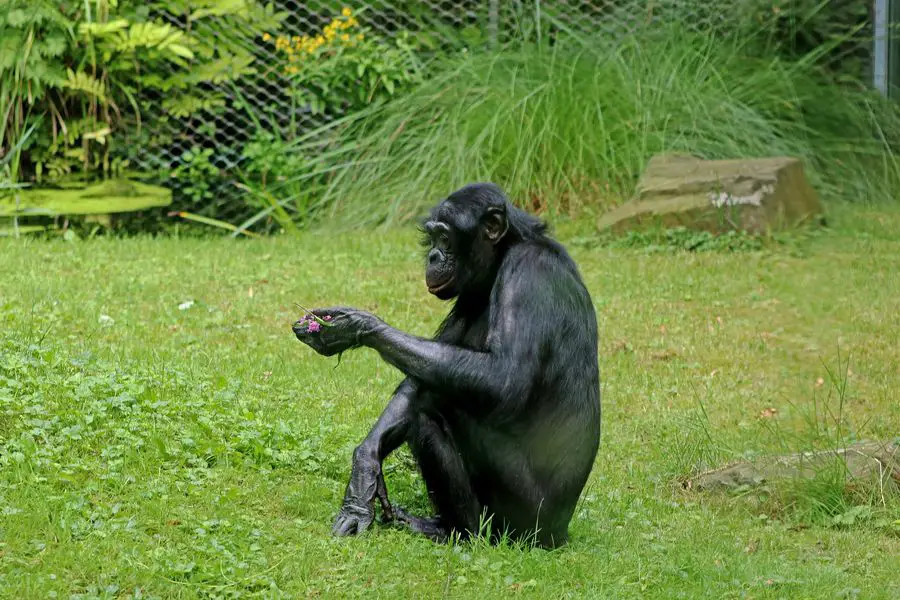
- Why endangered: Poaching, habitat loss, and disease.
- Location: Democratic Republic of the Congo.
- Population: Estimated between 10,000 and 50,000 individuals.
- Responsible traveling: Support organizations like the Bonobo Conservation Initiative, as direct encounters with bonobos are rare, and travel to the DRC can be challenging.
4) Chimpanzee (Pan troglodytes)
Family Hominidae, Order Primates.
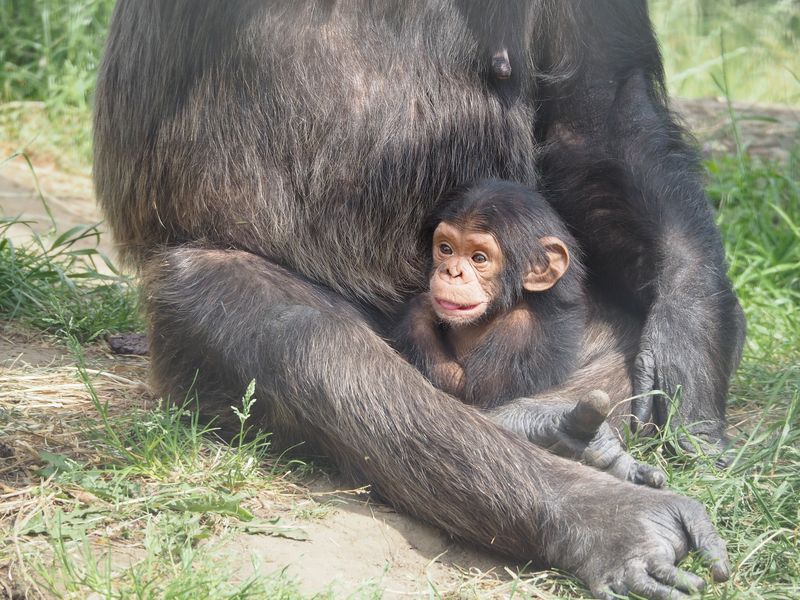
- Why endangered: Habitat loss, hunting, and disease.
- Location: Central and West Africa.
- Population: Estimated between 170,000 and 300,000 individuals.
- Responsible traveling: Visit national parks like Kibale National Park in Uganda or Mahale Mountains National Park in Tanzania.
Sea Animals
Sea Turtles (Cheloniidae and Dermochelyidae families)
Sea turtles worldwide can all be considered endangered due to poaching, entanglement in fishing gear, and habitat loss. Their population depends on the species, and they live in the oceans worldwide; however, different species colonize different locations.
In the list of endangered sea turtles, we can find in particular:
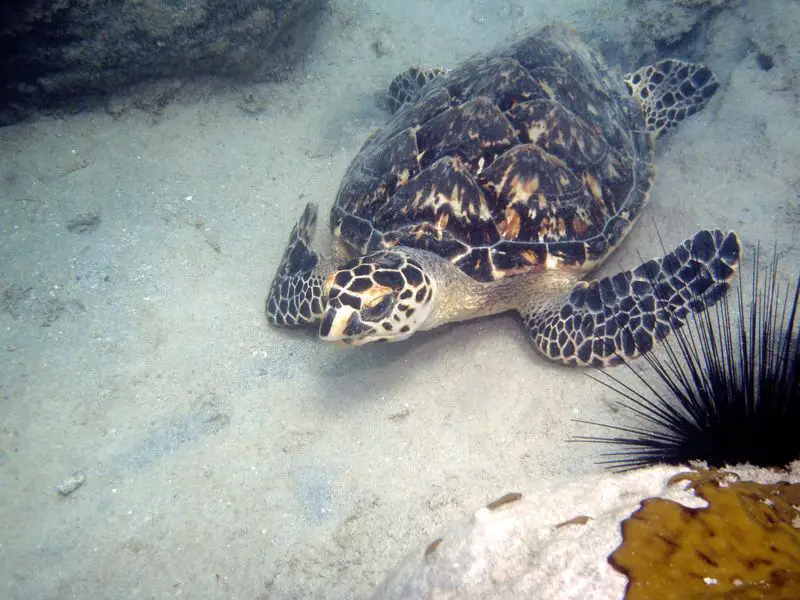
a. Hawksbill Turtle (Eretmochelys imbricata)
Family Cheloniidae, Order Testudines.
- Why endangered: Poaching for their shells, entanglement in fishing gear, and habitat loss.
- Location: Tropical and subtropical oceans worldwide.
- Population: Unknown, but nesting females have declined by more than 80% in the last century.
- Responsible traveling: Visit turtle conservation projects like the Turtle Foundation in Cape Verde, which focuses on protecting nesting beaches.
b. Green Turtle (Chelonia mydas)
Family Cheloniidae, Order Testudines.
- Why endangered: Poaching, entanglement in fishing gear, and habitat loss.
- Location: Tropical and subtropical oceans worldwide.
- Population: Unknown, but nesting females have declined by more than 50% in the last century.
- Responsible traveling: Visit turtle conservation projects like the Sea Turtle Conservancy in Tortuguero, Costa Rica, which focuses on protecting nesting beaches.
Cetaceans
Cetaceans are marine mammals that include whales, dolphins, and porpoises. They include various species, ranging from blue whales, the largest existing animal, to the playful and highly social bottlenose dolphin. Habitat degradation, pollution, climate change, and human activities such as fishing and hunting have created a situation where some species are now endangered. Dedicated conservation efforts, such as marine protected areas and research initiatives, are crucial to safeguard the future of cetaceans.
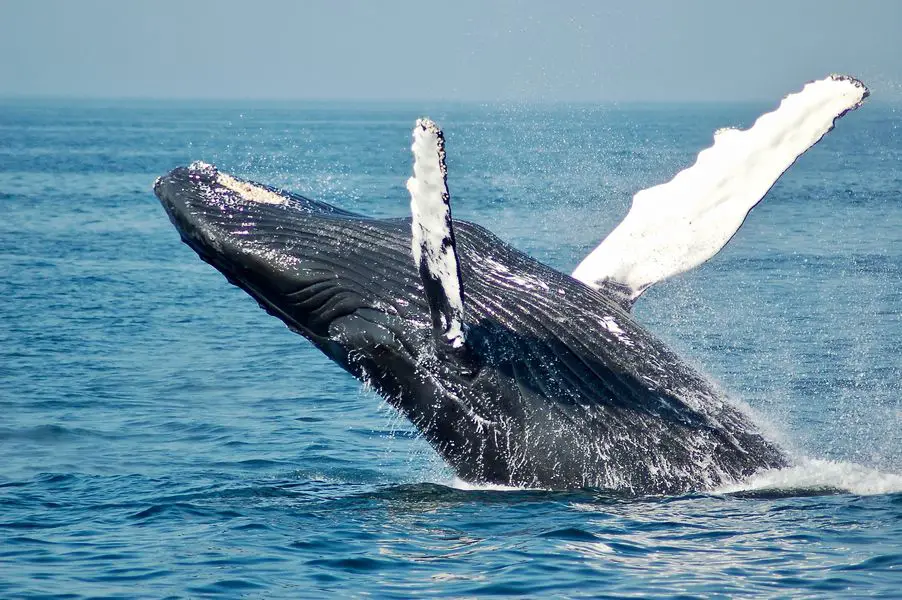
a. Vaquita (Phocoena sinus)
Family Phocoenidae, Order Cetacea.
- Why endangered: Entanglement in illegal fishing gear.
- Location: Northern Gulf of California, Mexico.
- Population: Fewer than 20 individuals.
- Responsible traveling: Support organizations like the VaquitaCPR and visit the Gulf of California with responsible whale-watching.
b. Yangtze Finless Porpoise (Neophocaena asiaeorientalis ssp. asiaeorientalis)
Family Phocoenidae, Order Cetacea.
- Why endangered: Habitat loss, pollution, and accidental entanglement in fishing gear.
- Location: Yangtze River in China.
- Population: Approximately 1,000 individuals.
- Responsible traveling: Support organizations like the World Wildlife Fund, which works to protect the porpoise and its habitat, as direct encounters are rare due to their elusive nature.
c. Blue Whale (Balaenoptera musculus)
Family Balaenopteridae, Order Cetacea.
- Why endangered: Historical whaling, ship strikes, and entanglement in fishing gear.
- Location: Worldwide in all oceans.
- Population: Approximately 10,000-25,000 individuals.
- Responsible traveling: Visit locations like the Gulf of California, Mexico, or Monterey Bay, California, with responsible whale-watching operators.
d. Fin Whale (Balaenoptera physalus)
Family Balaenopteridae, Order Cetacea.
- Why endangered: Historical whaling, ship strikes, and entanglement in fishing gear.
- Location: Worldwide in all oceans.
- Population: Approximately 100,000 individuals.
- Responsible traveling: Visit places like Iceland or the Azores with responsible whale-watching operators.
e. North Atlantic Right Whale (Eubalaena glacialis)
Family Balaenidae, Order Cetacea.
- Why endangered: Ship strikes, entanglement in fishing gear, and climate change.
- Location: North Atlantic Ocean.
- Population: Approximately 360 individuals.
- Responsible traveling: Visit locations like the Bay of Fundy in Canada or Cape Cod in Massachusetts with responsible whale-watching operators.
f. Sei Whale (Balaenoptera borealis)
Family Balaenopteridae, Order Cetacea.
- Why endangered: Historical whaling, ship strikes, and entanglement in fishing gear.
- Location: Worldwide in all oceans.
- Population: Approximately 80,000 individuals.
- Responsible traveling: Visit places like the Azores or Iceland with responsible whale-watching operators.
g. Whales (Balaenoptera, Balaena, Eschrichtius, and Eubalaena)
Order Cetacea.
- Why endangered: Historical whaling, ship strikes, and entanglement in fishing gear.
- Location: Oceans worldwide.
- Population: Varies depending on species.
- Responsible traveling: Visit locations like the Azores, the Gulf of California, or the Bay of Fundy with responsible whale-watching operators.
Cetaceans – Dolphins
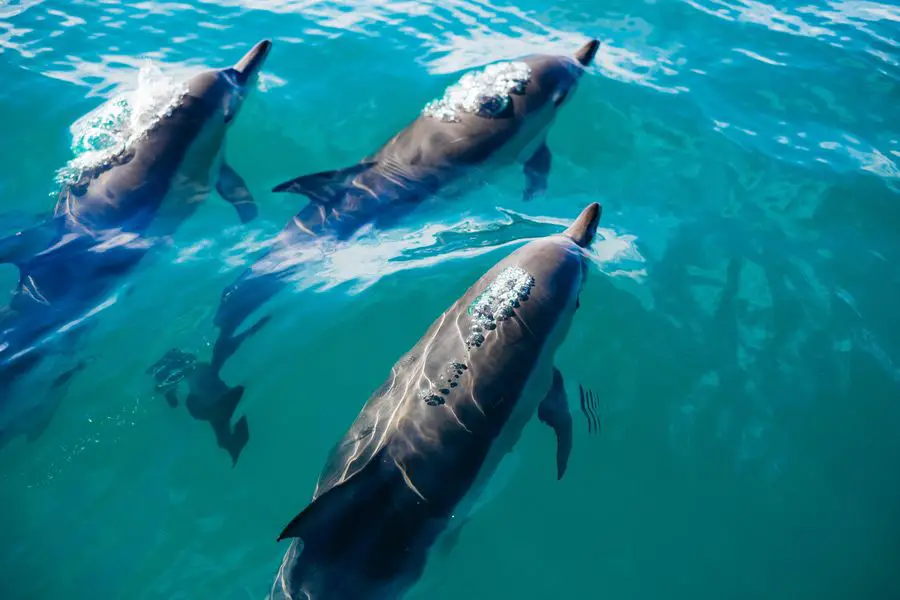
a. Ganges River Dolphin (Platanista gangetica gangetica)
Family Platanistidae, Order Cetacea.
- Why endangered: Habitat loss, pollution, and accidental entanglement in fishing gear.
- Location: The Ganges and Brahmaputra Rivers in India, Bangladesh, and Nepal.
- Population: Estimated at around 3,500 individuals.
- Responsible traveling: Support organizations like the Ganges River Dolphin Conservation Programme and visit the rivers with reliable tour operators.
b. Hector’s Dolphin (Cephalorhynchus hectori)
Family Delphinidae, Order Cetacea.
- Why endangered: Bycatch in fishing nets and habitat degradation.
- Location: Coastal waters of New Zealand.
- Population: Approximately 10,000 individuals.
- Responsible traveling: Visit New Zealand and support responsible dolphin-watching operators like Encounter Kaikoura.
c. Indus River Dolphin (Platanista minor)
Family Platanistidae, Order Cetacea.
- Why endangered: Habitat loss, pollution, and accidental entanglement in fishing gear.
- Location: Indus River in Pakistan.
- Population: Estimated around 1,100 individuals.
- Responsible traveling: Support organizations like the World Wildlife Fund, which works to protect the dolphin and its habitat, as direct encounters are rare.
d. Irrawaddy Dolphin (Orcaella brevirostris)
Family Delphinidae, Order Cetacea.
- Why endangered: Habitat loss, pollution, and accidental entanglement in fishing gear.
- Location: Coastal waters and rivers of Southeast Asia.
- Population: Unknown but considered to be declining.
- Responsible traveling: Visit locations like the Ayeyarwady River in Myanmar with responsible tour operators that support dolphin conservation.
Whale Shark (Rhincodon typus)
Family Rhincodontidae, Order Orectolobiformes.
The whale shark, with its massive size and distinctive spotted pattern, is the largest fish species on the planet. Despite its imposing appearance, the whale shark is known for its docile nature and filter-feeding habits. This animal lives the tropical and warm-temperate waters. Bycatch and the illegal wildlife trade are the main traits of their existence.
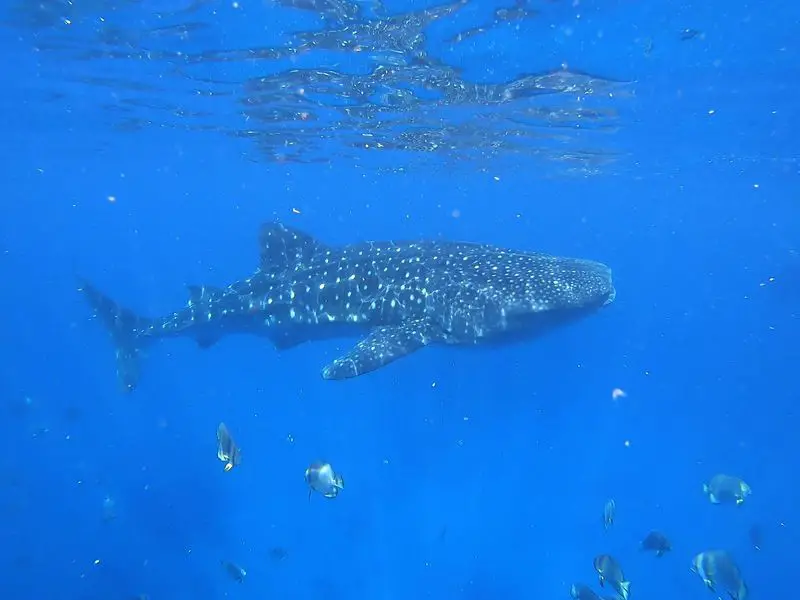
- Why endangered: Overfishing, habitat loss, and climate change.
- Location: Tropical and warm temperate seas worldwide.
- Population: Unknown but considered to be declining.
- Responsible traveling: Visit locations like Ningaloo Reef in Australia or Donsol in the Philippines with responsible snorkeling and diving operators that follow guidelines to protect whale sharks and their environment.
Bluefin Tuna (Thunnus thynnus)
Family Scombridae, Order Perciformes.
Bluefin tuna are highly prized fish and are prominent in marine ecosystems and the global fishing industry. Overfishing, habitat degradation, and illegal fishing practices are creating important problems to their numbers. Strict fishing regulations and sustainable fishing practices have been implemented to protect and restore bluefin tuna populations.
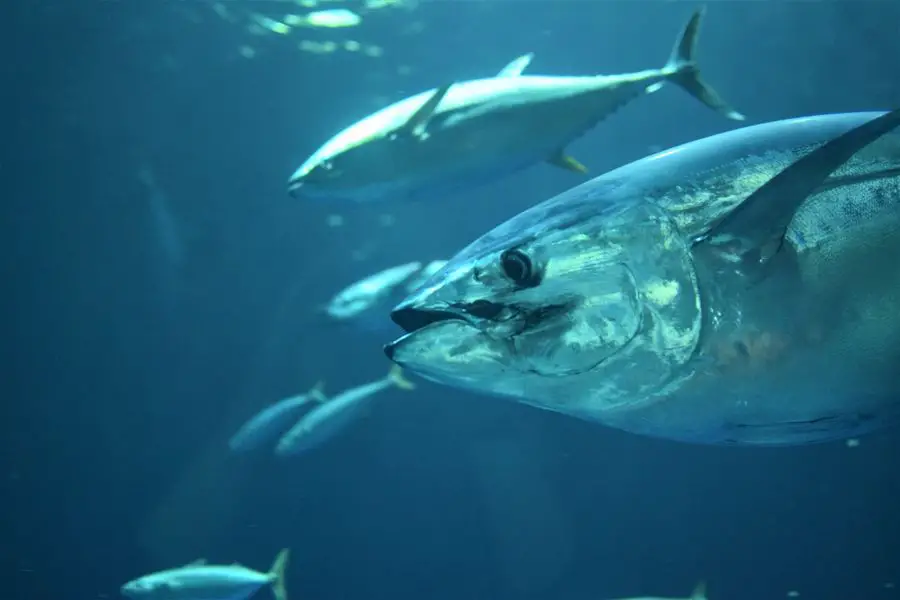
- Why endangered: Overfishing and habitat degradation.
- Location: Atlantic Ocean and Mediterranean Sea.
- Population: Unknown but considered to be depleted.
- Responsible traveling: Support sustainable fishing practices and marine conservation organizations like the Bluefin Tuna Foundation.
Humphead Wrasse (Cheilinus undulatus)
Family Labridae, Order Perciformes.
An extraordinary and iconic fish found in the tropical coral reefs of the Indo-Pacific region, the Humphead Wrasse is known for its distinctively large, protruding forehead, vibrant colors, and impressive size. The Humphead Wrasse faces significant challenges, including overfishing and habitat degradation due to climate change and coral reef destruction.

- Why endangered: Overfishing, habitat loss, and climate change.
- Location: Indo-Pacific coral reefs.
- Population: Unknown but considered to be declining.
- Responsible traveling: Choose responsible diving and snorkeling operators in the Indo-Pacific region that follow guidelines to protect coral reefs and marine life.
Sea Lions (Zalophus wollebaeki)
Family Otariidae, Order Carnivora.
Sea lions, fascinating marine mammals with playful nature and sleek bodies, can be found in various habitats, from rocky shores to sandy beaches. However, sea lions face significant problems due to human activities, habitat loss, pollution, and entanglement in fishing gear.
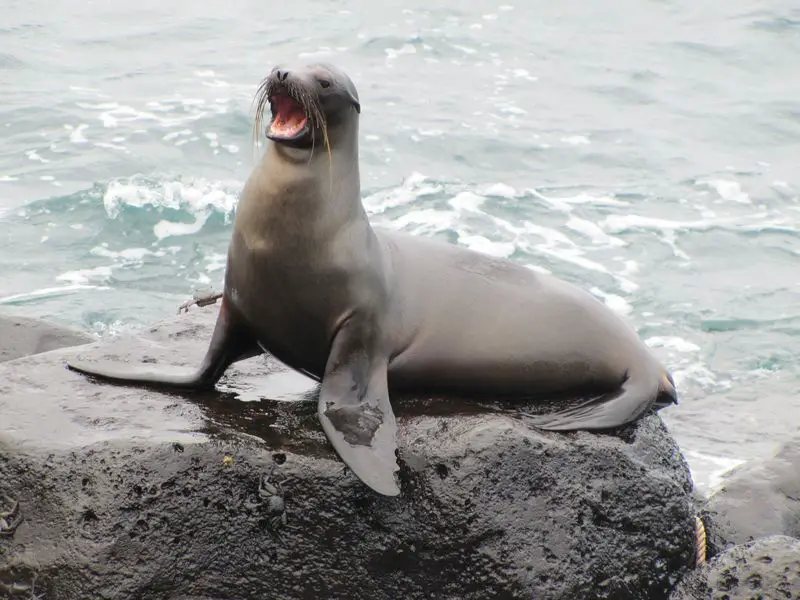
- Why endangered: Overfishing, entanglement in fishing gear, and habitat loss.
- Location: Galápagos Islands, Ecuador.
- Population: Approximately 20,000-50,000 individuals.
- Responsible traveling: Visit the Galápagos Islands with responsible tour operators, ensuring that you follow all guidelines for protecting the environment and wildlife.
Galápagos Penguin (Spheniscus mendiculus)
Family Spheniscidae, Order Sphenisciformes.
The Galápagos Penguin is unique and is the only penguin species found north of the equator. The Galápagos Penguin is an incredible anomaly; these small, flightless birds have adapted to the warm waters of the Galápagos. These penguins face numerous challenges, including habitat alteration, overfishing, and climate change-induced threats like rising sea temperatures.
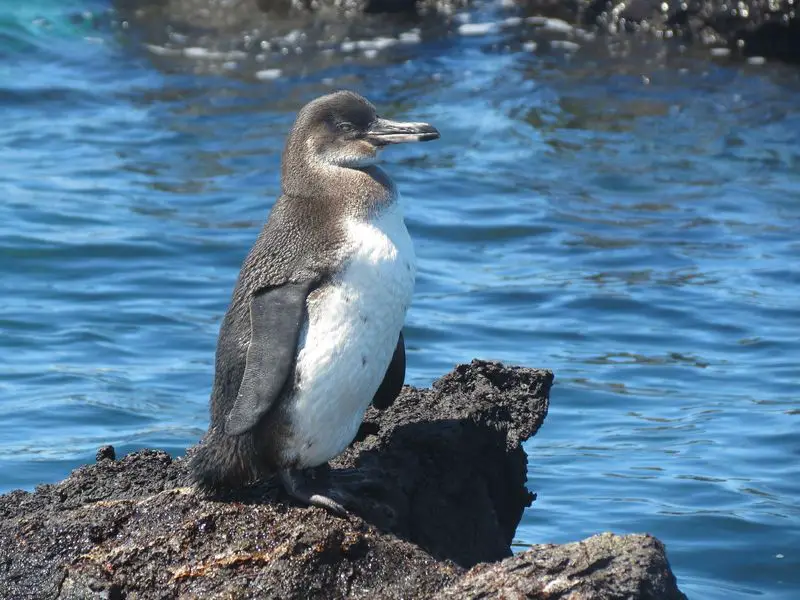
- Why endangered: Climate change, habitat loss, and disease.
- Location: Galápagos Islands, Ecuador.
- Population: Around 2,000 individuals.
- Responsible traveling: Visit the Galápagos Islands with responsible tour operators, ensuring that you follow all guidelines for protecting the environment and wildlife.
Insects
Monarch Butterfly (Danaus plexippus)
Family Nymphalidae, Order Lepidoptera.
While insects are incredibly diverse and abundant, they also can face endangerment and decline in certain species. The current state of insect populations raises concerns about the delicate balance of ecosystems and the potential consequences for biodiversity. Numerous species of insects are now considered endangered, including but not limited to the Monarch butterfly, Rusty patched bumblebee, Karner blue butterfly, Hawaiian damselflies, and several species of beetles and bees.
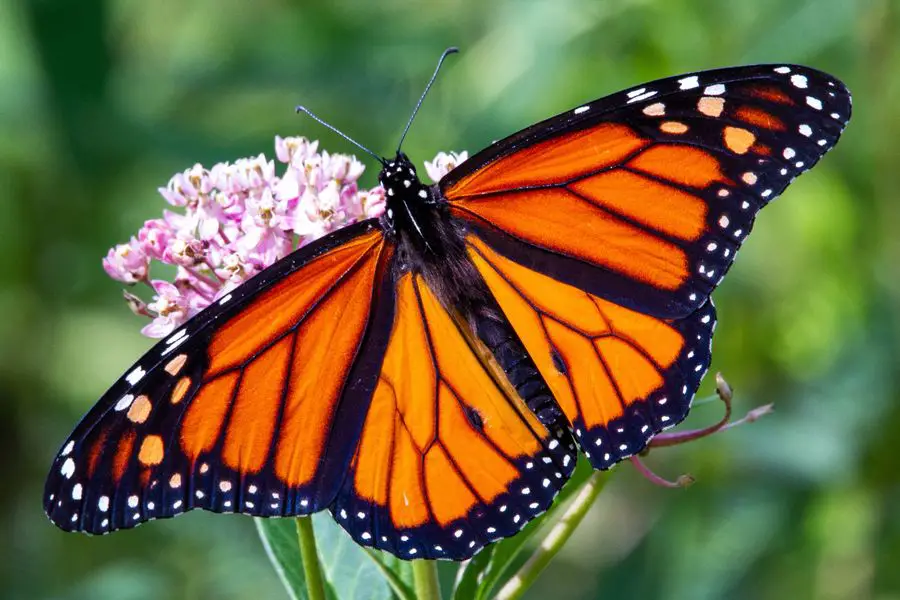
- Why endangered: Habitat loss, climate change, and pesticide exposure.
- Location: North America, Central America, and South America.
- Population: Unknown, but the eastern North American population has declined by over 90% in the last two decades.
- Responsible traveling: Visit butterfly sanctuaries like the Monarch Butterfly Biosphere Reserve in Mexico, and support conservation efforts by planting milkweed in your garden.
Conclusions
The list of most endangered animals is a reminder that species extinction is a present danger.
Learning about these unique creatures will help raise awareness of their endangerment and increase support for their preservation.
It is up to us as individuals to do our part in protecting these species from extinction. We can start by supporting conservation organizations, traveling responsibly, and advocating for policies prioritizing species protection.


